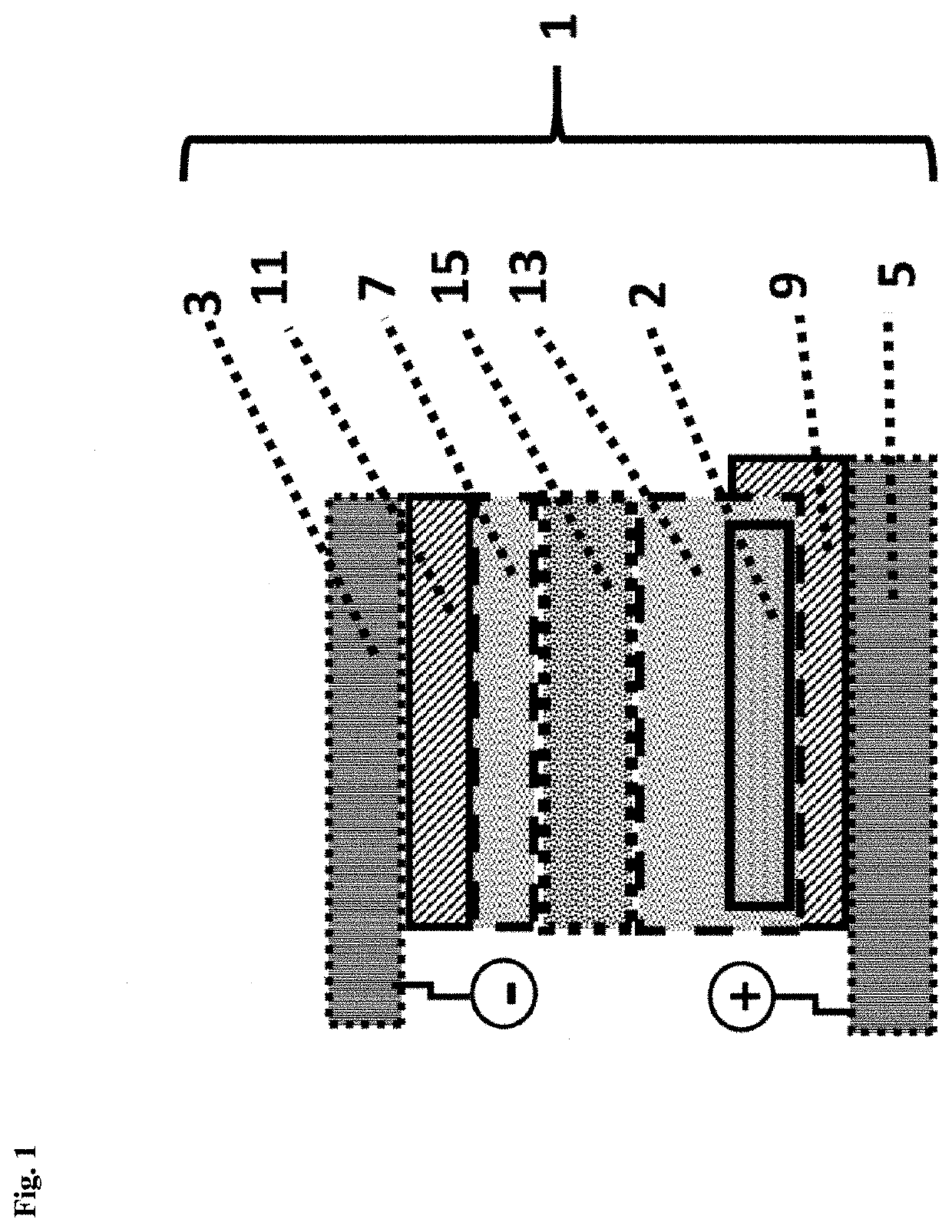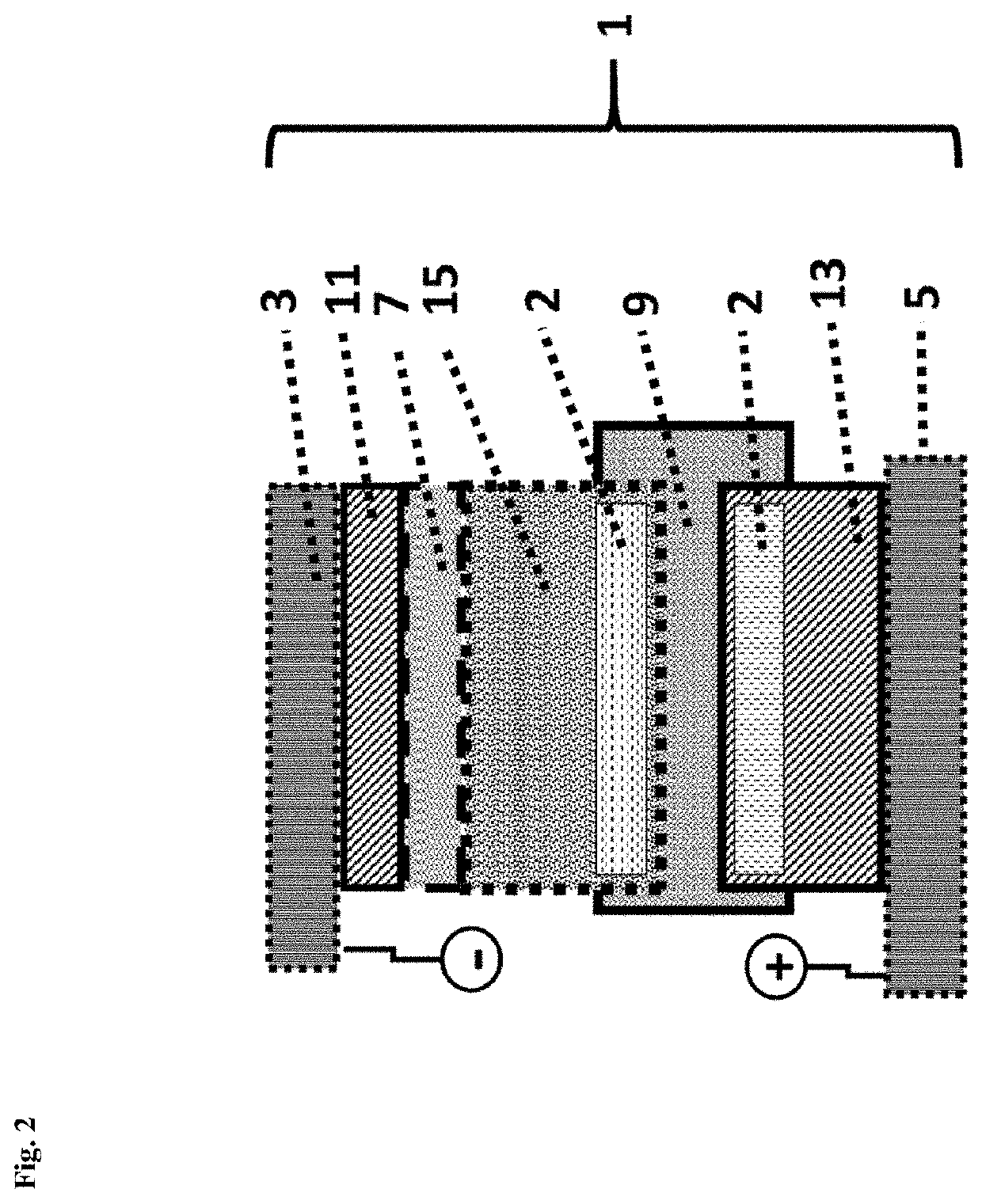Inductively doped mixed layers for an optoelectronic component, and method for the production thereof
a technology of optoelectronic components and mixed layers, which is applied in the field of optoelectronic components, can solve the problems of natural limitation, poor electrical performance of organic semiconductors, and disadvantages of current use of organic semiconductors, so as to save time, material and work steps, and prolong the useful li
- Summary
- Abstract
- Description
- Claims
- Application Information
AI Technical Summary
Benefits of technology
Problems solved by technology
Method used
Image
Examples
example 1
[0166]FIG. 1 shows a diagrammatic representation of a preferred embodiment of the optoelectronic component 1 with an inductively doped mixed layer. The optoelectronic component 1 represented is an organic light emitting diode (OLED). The layer structure of same has the following composition. A cathode 3 is used for providing electrons, while the anode 5 supplies electron holes, as soon as a voltage is applied to them. The signs + and − indicate the respective voltage direction. The properties of the electron injection layer 7 and of the hole injection layer 9 preferably enable an efficient quantum mechanical tunneling of the charge carriers. The electron transport layer 11 and the hole transport layer 13 are characterized by a high mobility for the charge carriers and ensure a targeted transport toward the optically active layer 15 which is a light generating or emitter layer. In the optically active layer 15, the charge carriers recombine, with generation of excitons and the radiat...
example 2
[0179]FIG. 2 shows a diagrammatic representation of an additional preferred embodiment of an optoelectronic component 1 with two inductively doped mixed layers 2. As in the case of FIG. 1, the optoelectronic component 1 represented is an organic light emitting diode (OLED). The function of the individual layers of the layer structure is analogous to FIG. 1.
[0180]However, the OLED represented is characterized in that both between a hole transport layer 13 and a hole injection layer 9 and also between the hole injection layer 9 and the optically active layer 15 an inductively doped mixed layer 2 is present in each case.
[0181]The inductively doped mixed layers result from successive application of the layers 13, 9 and 15 with the help of a printing method with suitable selection of the carrier means of the printing inks. In the process, in particular the carrier means of the printing ink for the second hole injection layer 9 to be applied is selected in such a manner that it can superf...
PUM
| Property | Measurement | Unit |
|---|---|---|
| Temperature | aaaaa | aaaaa |
| Temperature | aaaaa | aaaaa |
| Temperature | aaaaa | aaaaa |
Abstract
Description
Claims
Application Information
 Login to View More
Login to View More - R&D
- Intellectual Property
- Life Sciences
- Materials
- Tech Scout
- Unparalleled Data Quality
- Higher Quality Content
- 60% Fewer Hallucinations
Browse by: Latest US Patents, China's latest patents, Technical Efficacy Thesaurus, Application Domain, Technology Topic, Popular Technical Reports.
© 2025 PatSnap. All rights reserved.Legal|Privacy policy|Modern Slavery Act Transparency Statement|Sitemap|About US| Contact US: help@patsnap.com



